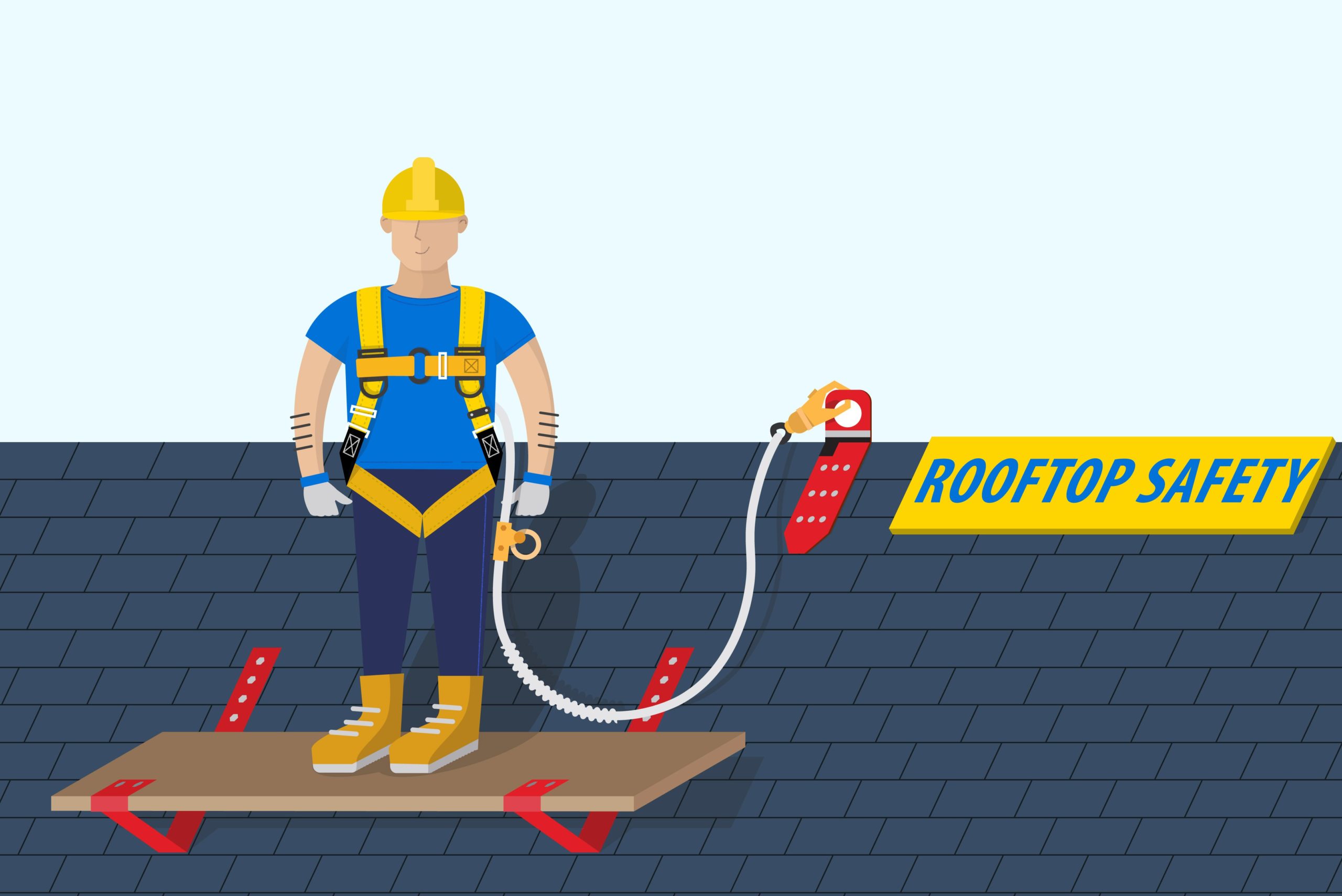There are always risks associated with working at height. While installing roof safety equipment like a roof walkway system isn’t a foolproof plan to guarantee zero accidents and falls, it certainly beats not having any in place at all.
Today we discuss it all: why roof safety is important, who’s at risk and tips to incorporate to ensure your workers’ safety.
Why Roof Safety is Important
Prevent Injuries
Did you know thousands of injuries occur in the construction industry every year that can be attributed to slips, trips and falls? That stat alone is reason enough to take roof safety seriously. In worst-case scenarios, fatalities may occur.
Prevent Lawsuits
Failure to implement the necessary roof safety precautions won’t only result in falls but in possible lawsuits. Quite frankly, putting roof safety measurements in place at your company is seldom a “nice-to-do” thing, it’s the law. When found in breach, and if an accident results, you may have to deal with a lawsuit or pay a hefty fine.
Prevent Unnecessary Medical Expenses
Even if your company isn’t faced with a lawsuit, you’ll have to pay medical expenses for your injured worker. Think about that the next time you think investing in roof safety equipment is an unnecessary expense.
Who is at Risk?
Mind you, it’s not only construction workers that are at risk whenever working at height. Even someone who is cleaning, maintaining, or fixing a roof is also at risk of falling. For this reason, it’s important that you call in a professional who has the necessary experience and equipment required to do the job.
Falls are more likely when working on the following surfaces as they are more fragile:
- Corroded metal sheets
- Non-reinforced cement sheets
- Slates
- Tiles
Tips to Ensure Roof Safety
Now let’s move on to the tips you need to keep in mind to ensure roof safety compliance.
Wear the Correct Protective Clothing
To work at height, your workers must always don the correct attire. Safety goggles, helmets, gloves, and boots are just a few examples. The wrong boots might increase the chances of slipping and falling.
While you’re at it, make sure they also wear sunscreen to avoid sunburn if working in extremely hot conditions. And above all, your workers should stay hydrated and take breaks in the shade often. Heat exhaustion is a real risk.
Use the Correct Safety Equipment
Along with the correct safety clothing, you must ensure workers use the correct equipment at all times. Use sturdy ladders or scaffolding that can hold them up effectively while working. Flimsy structures are a recipe for disaster.
It’s important to take into consideration the height of the building when deciding on the equipment to use. For example, tall buildings will require the use of fixed lanyards. When working on shorter buildings, self-retractable lanyards will suffice as they reduce the risk of a worker hitting the ground in the event of a fall.
Fall Protection Systems
You should never underestimate the use of fall protection systems on your roofs. These structures won’t only reduce the chances of your workers falling but minimise injuries if they do fall. A few common examples of effective fall protection systems include:
- Roof walkways: These are among the safest roof safety structures you can consider. Whether you pick one that’s made of aluminium or fiberglass, make sure that it’s sturdy and installed correctly.
- Guardrail edge protection: This system provides permanent edge protection for roofs.
- Fall protection lanyards: Lanyards secure workers from falling and are worn around the shoulders, waists or wrists.
- Roof anchor points: These are ideal for workers conducting regular roof maintenance jobs or high-level window cleaning.
- Safety harness: Clipping safety harnesses onto permanently installed sockets on the roof can reinforce the security of anchor points.
Follow Safety Procedures
It’s important for people working at height to follow the necessary safety procedures. The correct tools should always be used for the intended task and your workers must be trained to use them. This will minimise any errors while working which might compromise balance and ultimately safety.
Make sure that workers are well versed with procedures involved when carrying tools up and down the roof. For example, it’s advisable to carry tools in a bucket, tie a rope to the bucket and pull it up as opposed to carrying them in their pockets. In short, make sure your workers get the necessary training required when working at height.
Wrapping Up
Taking the necessary roof safety procedures is in your company’s best interest. Failure to do so will result in accidents, unnecessary medical expenses, and potential lawsuits. While we can’t deny that roofing is a dangerous profession, there are measures you can put in place to minimise the associated dangers.
It really doesn’t take much to reduce the risk associated with working at height. Just make sure that you do your part to protect your workers and ensure their safety.
Last tip: make sure that your workers don’t work under extreme conditions such as rainy, snowy or very hot weather. Your workers’ safety depends on it.

